It is not possible to bring back lost human lives. Overwhelmed by pain, we don’t know exactly what to do about the rubble inside us as we plan to remove the actual rubble from the quake-stricken areas.
There is serious confusion about the economic consequences of the earthquake damage. To address this confusion, I offer a brief analysis below, focusing on the following aspects of the earthquake’s economic impact.
– Possible loss of income due to business interruption
– Possible loss of income due to an influx of commercial activities moving to the affected region
– Costs that will arise out of damage to superstructure and infrastructure and the following reconstruction
– Costs of in-kind contributions and financial aid for those affected by the earthquake
– Labour loss in other regions due to personnel transferred to the affected region
– Costs that will arise due to relocation of industry and trade facilities to other regions
– Costs that will arise due to migration from the affected region to other regions
In addition to all these, we could say the region will undergo a major change in socio-cultural terms, the value chain will also dramatically change, not only low income groups but also the investors will migrate to the western areas to seek new opportunities, therefore, the west of Turkey will take a larger share in economic activities than before.
We do not have any historical data proving that people whose welfare had increased in the past as a result of the implementation of an integrated development plan in today’s quake-hit region continued to live in these areas. On the contrary, the available data shows us that the socio-economic opportunities, education, sports and health facilities in these areas that had undergone a planned development have not been sufficient enough, hence people whose incomes have grown over the years migrated to more developed regions. The demographic structure in Istanbul, Ankara and Izmir provinces is clear evidence of this pattern.
This migration trend is not surprising at all because we see that people living in Istanbul, Ankara and Izmir provinces as well yearn to live in Europe or the United States, which reveals that the problem is not merely about infrastructure, housing or social opportunities. Therefore, when reconstructing this region, it is imperative to embrace a new and different point of view.
In almost every Anatolian city I have visited over the last decade, I have seen a uniform architectural design. In these cities that have nearly lost their own characteristics people live in uniform and soulless apartment blocks. On the way from the airport to the city centre, you can hardly recognise. the buildings blend together and you never know which city you are in, if it weren’t for signage.
In fact, this is the product of a superior perspective, which does not like diverse textures and condemns citizens to a uniform lifestyle. Barely defined notions such as “Turkish lifestyle” or “neighbourhood”, which can be interpreted into different forms and contexts, bearing sometimes positive or negative features, should be abandoned and the unique culture of each province in the region should be brought to the fore.
The building practices in Turkey that focus on bigger square meters but less diversity should from now on start encouraging and implementing energy efficient and earthquake-resistant construction, architectural aesthetics, and cultural characteristics in the housing industry.

